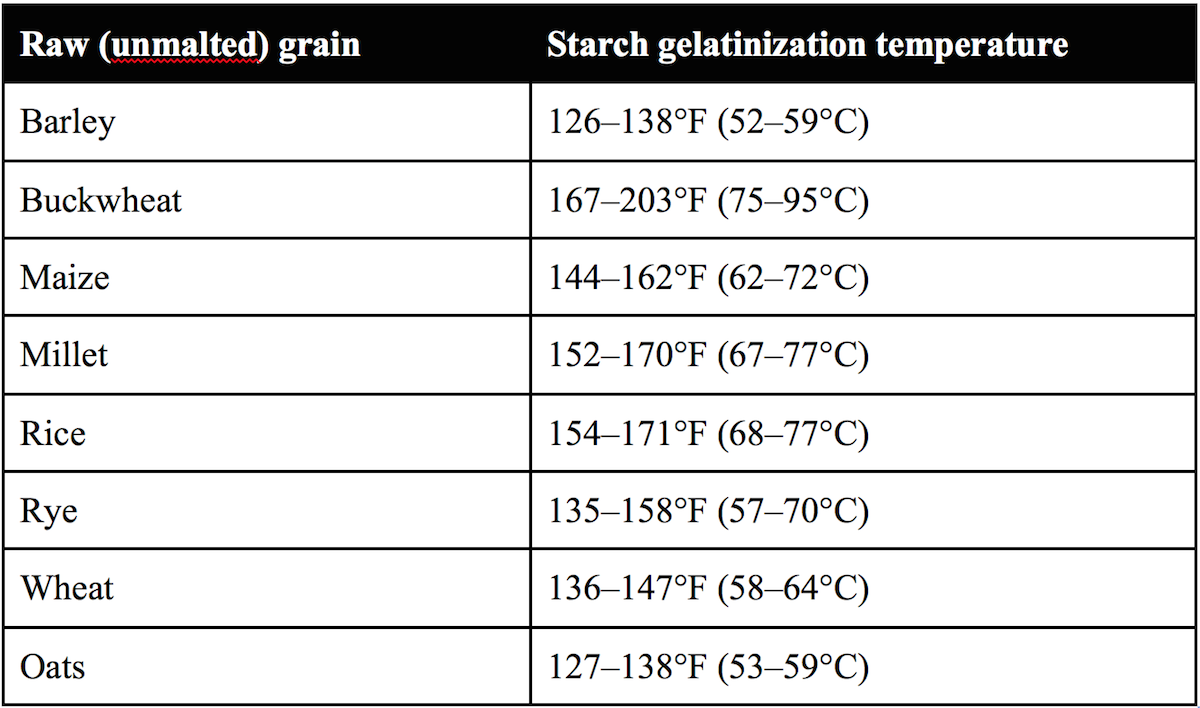With the wide range of malted, torrefied, and flaked adjuncts available to homebrewers these days, there’s actually not much reason to bother with cereal mashing anymore. Nonetheless, it’s a historically relevant technique you might want to keep in your back pocket for a rainy day. After all, great mountain climbers still know how to execute a Dülfersitz rappel even though modern equipment makes it mostly unnecessary.
Let’s say you want to brew with oats or maize, but you forgot to buy rolled oats or flaked maize at the homebrew store. If you happen to have Irish steel-cut oats or corn grits in the kitchen cupboard, you can use that instead by conducting a cereal mash. The goal of the technique is to hydrate and gelatinize the internal starches, which happens at different temperatures for different grains.

To perform a cereal mash, you’ll need your unmalted adjunct and some two-row or six-row barley malt. Essentially, you’ll pre-cook the adjuncts before adding them to your main mash, where starch conversion will occur.
- Mill your adjunct to the same degree of fineness as you mill the malted barley for your main mash, or slightly finer.
- Add about 20 percent crushed barley malt, by weight, to your quantity of unmalted adjunct. So, if you have 1 pound of oats, add 0.2 pounds of barley malt, or about 3 ounces. One kilogram of maize would warrant 200 grams of barley malt, and so on.
- Add hot water to the mix of adjunct and malt, stir, and measure the temperature. Continue to add hot water until you hit the starch gelatinization temperature shown in the chart for the adjunct you’ve chosen. Hold the cereal mash at this temperature for about 15 minutes.
- After the 15-minute rest, slowly heat the cereal mash to boiling, and allow it to boil for 30 minutes, just as if you were making oatmeal. Be sure to stir frequently to prevent scorching. This would be a good time to start heating the strike water for your main mash.
- Once the 30-boil is complete, the starches are fully gelatinized and ready to be converted by the enzymes in the main mash.
You have some different options for how to add your cereal mash to the main mash. For instance, if you’re conducting a multi-step temperature mash, you could treat the cereal mash as a decoction addition to the main mash, but this isn’t too common.
The least math-intensive option would be to cool your cereal mash to the target temperature for the main mash, say 149–154°F (65–68°C), and then add it at the same time as you mash in with your strike water. However you choose to add the cereal mash to the main mash, once it’s in there, it’s just like any other mash you’ve done. Wait an hour or longer for the malt enzymes to break down starches into sugars, and proceed normally.
Good luck, and happy mashing!

